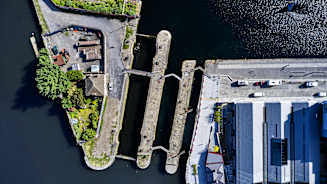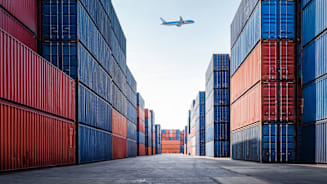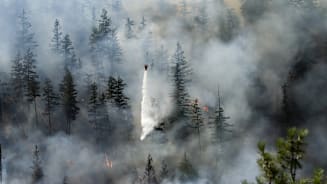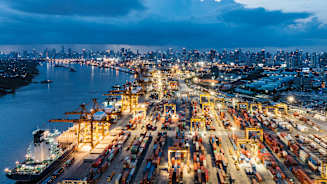As organizations work to meet ambitious decarbonization targets, they’re confronted by both the promise and the complexity of moving to a net-zero economy. No matter the industry, it’s a massive effort — one that requires innovative approaches and new technologies, which may come with significant risk and uncertainty. Companies need a clear view of the risks and potential impact, along with risk mitigation measures, to protect and insure their net-zero investments. Comprehensive, data-driven approaches that integrate deep knowledge of the technical, risk and insurance landscape will not only help manage uncertainty and make progress on the carbon-reduction agenda, but also set the stage for business value.
Companies in the global energy sector have unique, high-stakes risks to address as they move toward a climate-neutral value chain. Existing refineries are investing in new technologies and practices for cleaner energy, including biofuels.1 As they do, they must manage transition risk and stakeholder and shareholder concerns from all angles.
“The transition from fossil fuels to renewables is a top priority. That means investing in increasing our renewable production and managing the various risks and opportunities ahead. From regulatory change to new technologies and adapting our equipment, there is a lot of complexity to navigate. But these are the steps we have to take to achieve our net-zero ambitions.” – Executive of a European fuel company
Biofuels and the Decarbonization Journey for Petroleum Refineries
Traditional fossil-fuel refiners face challenges when introducing biofuels from a technical perspective. They’re corrosive, contain impurities, need to be pretreated and typically require exotic metallurgies. The technologies are vastly different than those normally encountered in traditional refining processes for transforming crude oil into transport fuels. While there is a dynamic market for new pretreating and refining technologies — one that often involves deploying technology from other industries — there are also risks associated with upscaling and repurposing these tools. Blending biofuels with fossil fuels, as most biofuel and petroleum refineries do, often comes with many variables. Companies must additionally consider regulations and tax implications for biofuel blends, which vary across geographies.
There is also significant complexity involved in the construction phase regarding both the location of units and risks presented by existing equipment. As a highly integrated operation, any interruption can affect other units, leaving companies with the burden of property damage and high investment costs.
From an operational and maintainability perspective, most risk management teams are well equipped to address risks associated with Petroleum refineries. However, biofuels introduce greater challenges — from new technologies to costly production and the variability in biofuels. There are also business risks to consider, including evolving demand for biofuel products, changes in taxation and shifting pricing models.
An insurance market taking on that risk needs the right data, coupled with confidence in the process and ability to meaningfully address these risks.
Strategies for the Evolving Biofuels Risk Landscape
As refineries continue paving the way for decarbonization by committing to renewables and biofuels, they’ll need deep insight into the insurance market and technical know-how to address risk and manage their investments.
At the earliest stages during construction, companies need to identify potential partners for risk transfer. They can achieve this by understanding the concerns of the insurance market — first articulating what the risks are and then taking the right actions to mitigate them and build resilience. Dedicated expertise and data and analytics come into play when identifying all the ways a refinery can derisk their construction project. For example, during the construction phase or the design of the construction phase, a company will space equipment with an established set of rules (for instance, that a pump must be X meters from a vessel, which must be Y meters from a furnace). But there’s an opportunity for more data- and analytics-driven modeling to make units more attractive to insure. The modeling might show that a release from a given vessel could cause a costly event — and if the company changes the layout in the design phase, they can reduce their risk exposure from an insurance perspective and better protect their investments and future cash flow.
For many companies using new, prototypical or lab-proven technologies, the challenge is demonstrating to insurance markets that such technologies do, in fact, perform as expected. One approach is performing or identifying larger pilots with proven technology, and then providing that reference list to the insurance markets. This is particularly important if the same technology is employed by the larger oil and gas majors that do not typically reinsure traditionally, providing less opportunity for underwriters and their engineers to be exposed to, and gain familiarity, this new technology. The key is to communicate to insurance markets that while the technology is relatively nascent, it’s robust from an insurance perspective.
With the right information, companies can provide more assurances to the insurance market and strengthen their ability to access risk capital — ultimately enabling them to invest more in the bold moves needed to decarbonize.
Meeting ambitious targets in the most economically viable, risk-resilient way involves technical skills, data and analytics, and deep insight on the insurance market and energy sector. Cutting through the complexity and managing risk effectively is a win-win from both a climate and business perspective.
































































































































































































